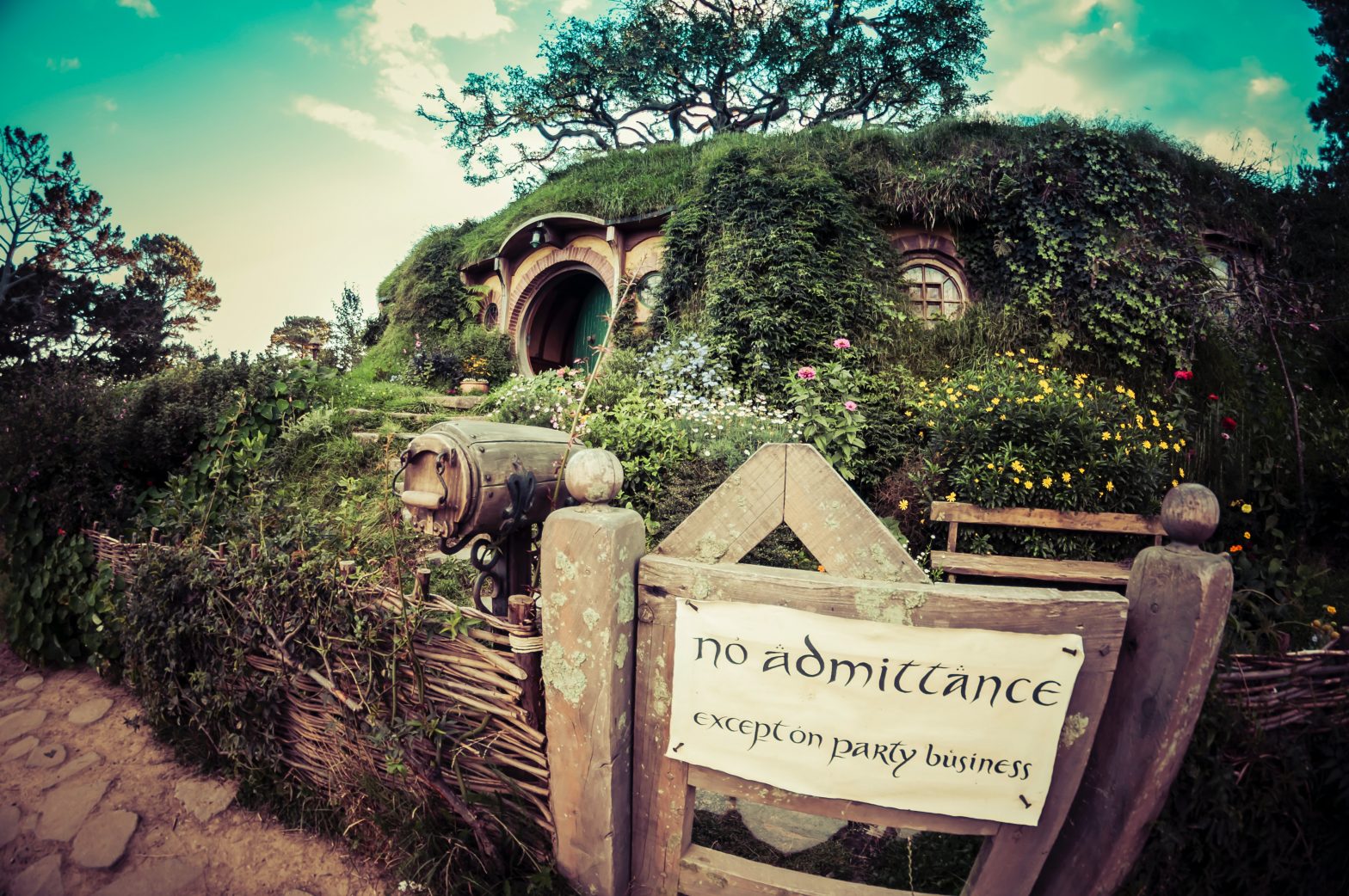Hobbiton was at the top of my list for NZ North Island.
Having seen lots of countryside locations where Lord of the Rings had been filmed, I was now keen to see something that had been built especially for the film.

Hobbiton is big business, with 3,000 people a day visiting in peak season. Although, bafflingly, our tour guide told us that 40% of visitors have no idea what Lord of the Rings is, so why they fork out $80 each to do the tour is a mystery.
We’d already been told about Peter Jackson’s obsessive attention to detail, but it was really brought home when we walked around the set and saw the level of detail involved.
There are two sets of hobbit homes. The first set are built to 90% human scale –

– so the hobbit actors look the right size for their homes.
The second set are built to 60% human scale –

– so that Gandalf looks enormous when he stands next to them.
Every hobbit hole has a functioning chimney, and during filming one member of the crew had to run around and light each chimney with special beeswax lighters just before it was needed for a shot.
The clothing on washing lines was also in either 60% or 90% scale –

– and someone was employed to hang out the clothes every day, so that they looked like a load of washing put out to dry, and not like costumes that had been left on a washing line for the duration of filming.
There was also the problem of nature not doing its stuff properly. The story required a plum tree, but it was the wrong season for plums, so Peter Jackson ordered plums to be wired onto an apple tree – and then the tree was never seen in any of the films anyway.
And there was another tree whose leaves, according to PJ, were ‘the wrong shade of green’. So he employed people to strip all the leaves off the tree, and then wire on fake ones in the right shade, instead. All that trouble and expense for just one tree among many in Hobbiton.
And the most expensive tree of all is the tree above Bilbo’s house, Bag End –

The story required a large oak tree over Bag End, and there wasn’t one. So they cut down a tree in nearby Matamata, sawing off and numbering all the branches. They transported it to Hobbiton, bolted the branches back on, fixed it in place in the ground, and wired 376,000 silk leaves onto it, imported from Taiwan … and you thought people went to a lot of trouble for the Chelsea Flower Show.
Every hobbit home had a clue to the owner’s trade –


– except for Bag End, and I seem to recall that Bilbo was a gentleman of leisure, so no beehives, cheese or freshly-baked loaves there.
All the wood you can see in the photos was aged with vinegar, and then coated in yogurt to encourage lichen to grow, and all the gardens were planted a year before filming began, to make them look mature and established. Everything was done that could be done to make Hobbiton look like a real, lived-in village.
Such is the popularity of the tour, that groups walking around the set are just five minutes apart and can easily bunch up if one group has a lot of narcissistic selfie-takers, who slow the whole group up. Sadly, I was just too late to photograph a woman in the group in front of us who toppled headlong into the shrubbery while attempting a selfie perched on a very small bench. Needless to say, I managed to sit on the bench very successfully, without upending myself in the bushes –

Finally …

…time for a ginger beer at the Green Dragon –

Unashamedly touristy – and I loved every minute of it!
